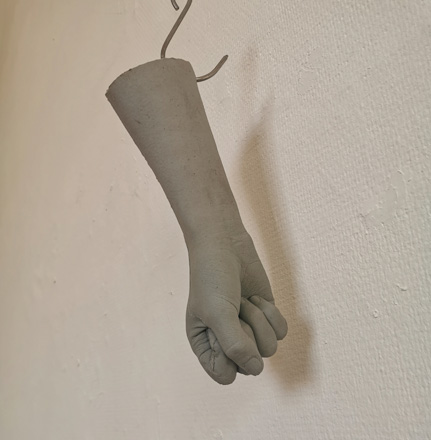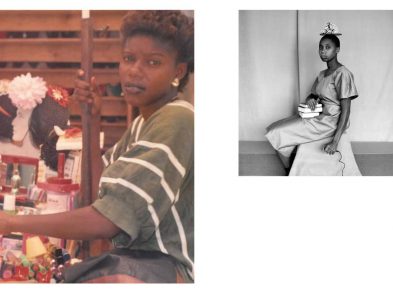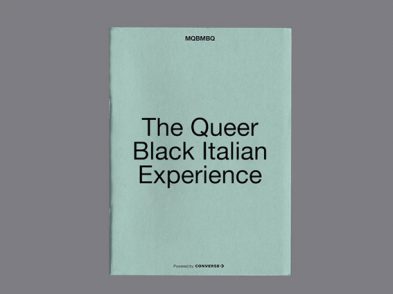The past month has seen the aggressive awakening of social consciousness across the world. Black History Month Florence (BHMF) has collaborated over the years with The Florentine to highlight stories and content related to our ongoing research projects and programming including The Recovery Plan, (a pop-up Black Cultural Center), Black Archive Alliance (a research project examining archival findings connecting Africa and the Italian context), On Being Present (recovering Black African presence in the collection of the Gallerie degli Uffizi) and YGBI Research Residency (collectivizing young Afro-Descendent artists residing in Italy). With this article, we initiate a monthly column dedicated to the centering of Afro-Descendent cultures in the Florentine and, more broadly, Italian context, highlighting concerns and celebrating writers that have been actively engaged over the years.
The column Chi Beve Nero, Guadagna Colore (Whoever Drinks Black, Earns Color) intends to extend beyond the important gesture of solidarity on behalf of institutions and publications that has emerged with the current protests across the world and establish an ongoing and longstanding commitment on behalf of this publication to under-acknowledged voices, perspectives and histories rooted in the city of Florence and across the country of Italy.
People of Florence, do you have peace?
“People of Florence, do you have peace? From the sparkling stones, suddenly rendered to life, a clamor has arisen. […] Humanity can never be threatened any more than it has been in recent years. Because the ideas of peace and fraternity can never be ridiculed as they have been in these last years”.
—Léopold Sédar Senghor, Florence, Palazzo Vecchio, October 4, 1962
The murder of George Floyd sent a tremor from Minneapolis that rapidly spread, amassing atop an already immense swell of uncountable deaths of unarmed Black people across the United States compounded with explicit and implicit racial violence, systematic oppression, mass incarceration, the surveillance of Black bodies, the symbolic subjugation of racist monuments and the disproportionate and exasperating death rates of Black Americans under the pandemic of Covid-19. Floyd’s death became symbolic of the straw consistently thrown upon the camel’s back.
From the post WWII period, the USA took upon itself a leadership role, oft working to validate its authority without reckoning with or acknowledging the source of its wealth and power rooted in the theft of native lands, the genocide that coincided with this and the hundreds of years of slavery and Jim Crow combined to amass its wealth and status. At times, a reflection on history can be rooted exclusively in a hierarchically structured understanding of academic knowledge. The work of BHMF finds itself frequently engaged in Black speculative histories that are cognizant of the documents, scholars, artists and voices that exist surrounding Blackness in the context of Italy extending back through all of recorded history, but attuned to all that was not written or recorded and mindful of the positionality of the authors of the written history that we have inherited.
The protests that re-emerged in the United States over the past month under the banner of Black Lives Matter prompted a re-emergence of activism and awareness in many other countries where systemic and implicit forms of racism have too frequently gone unchallenged and often even unnoticed. Locally advanced specificities in various countries have served to remind populations across the world of the persistence of colonial histories and the significance and implications of the contemporary policing of citizenship and borders. This persistence contributes to the value systems that govern the morale and social concerns that surround us.

Black Powerless, Binta Diaw. Silicone and steel, 2017-19. (An artist of the YGBI Research Residency.)
In 1962, Florence was the site of critical conversations around the relationship between the African continent and the country of Italy, elaborated through an invitation, on behalf of then mayor of Florence, Giorgio La Pira, towards the newly elected leaders of some of the countries that had ousted colonial rule. Léopold Sédar Senghor, then president of Senegal, was amongst those invited to address the state of affairs in Africa. Senghor began his speech delivered from Palazzo Vecchio with a simple question: “People of Florence, do you have peace?” This seemingly innocuous provocation, in reality, evokes an important reflection on positionality. Rather than addressing Africa, he shifts the focus towards the state of affairs in Florence, positing a mediation on the lack of completeness that all of Europe should feel in dismissing the presence and historical importance of Afro-European history, relations, exchange, exploitation and narratives.
A lack of appreciation for intersectionality and positionality frequently impedes an open reflection on racism in the context of Italy, with its ongoing debate around citizenship and migration (often codified as a term addressing African migrants and their children), afflicting also the city of Florence, which has been host to multiple racially motivated murders. We need multiple perspectives and voices to assist us in examining the ways in which our collective social concerns are exacerbated through the additional weight of explicit and implicit racism.
This forthcoming column intends to highlight the voices of writers examining Blackness in Italy in order to foster the heightened understanding of the positionality of all Italians, White, Black, Brown and beyond, to grapple with their individual understands of history and their contribution to anti-racism. There is a Tuscan saying “Chi beve nero, guadagna colore” (Whoever drinks black, earns color). While this saying is rooted in the capacity of wine to overcome unhealthy pale complexions, embedded in it is an anecdote that recognizes value in broadened perspectives and their capacity to provide a more complete outlook and history, earning color.
In the meantime, you can join us on Instagram and Facebook to discover our ongoing projects, including a collaboration with the Uffizi with a July 4 TikTok live, as well as our workshop series Fischi Per Fiaschi, part of Villa Romana’s summer program Scuola Popolare.








